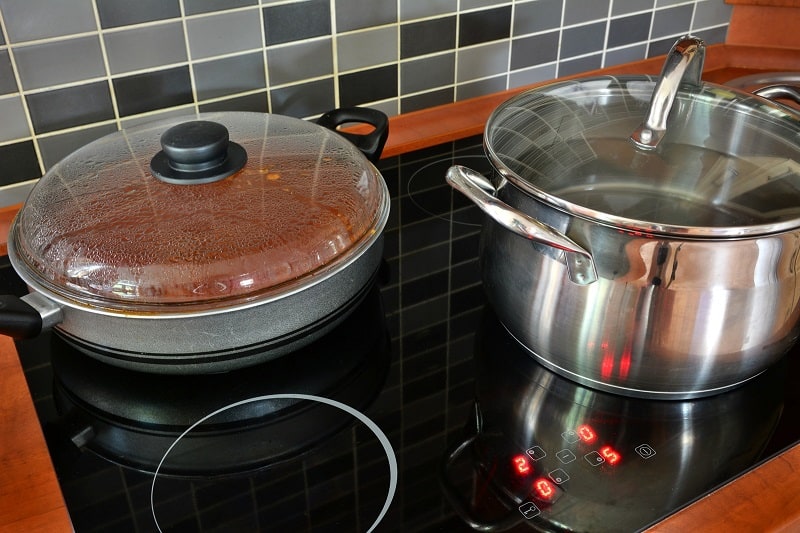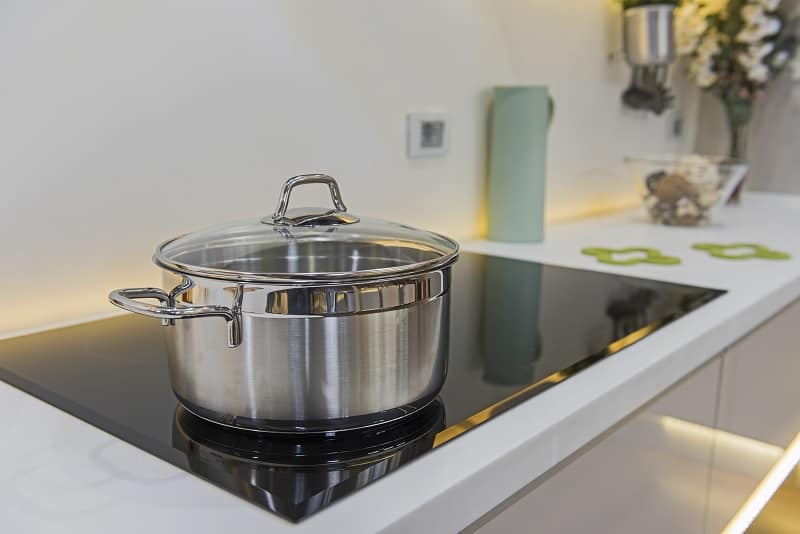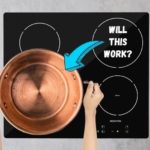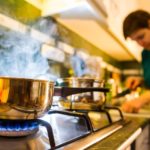Getting used to cooking on an induction hob can be tricky for some home cooks.
People who have switched from gas have a slightly easier time of it than people switching from electric hobs. This is because induction hobs have the same speed as gas, so gas hob users are used to the speed.
If you’re struggling to cook on induction, we can help. We have loads of induction hob articles that help with common issues with cooking on these hobs.
Below, though, we’re going to walk you through why your hob may be burning your pans and how to prevent this burning from happening from now on.
Why Is Your Induction Hob Burning Your Pans?
The biggest cause of induction hobs burning pans is overheating. This is most likely to occur when you are preheating the pan with nothing in it, ready to add the base of a sauce, or a steak, for example.
If you’re used to non-induction electric hobs, you’ll know that you need to wait a good few minutes for the pan to reach a suitable cooking temperature. However, with an induction hob, cooking temperatures are achieved in a fraction of the time.
So, to prevent burning your pans, in this case, you need to be aware of how quickly a pot or pan will heat up when preheating.
Induction hobs heat your pans directly. This is why the heat up time is shorter than a typical electric hob.
You can easily check if your pan is ready to cook by throwing a small piece of food into it. A small chunk of onion, for example.
If the onion begins to sizzle and fry, your pan is ready to go. If it doesn’t, the pan needs a little while longer.
In most cooking situations, you don’t need to run your induction hob at the highest temperature levels. As they heat up so quickly, and the pan is being heated directly, they generate more heat than an electric hob.
So, the highest temperature settings on an induction hob are actually way hotter than your old electric hob.
If you are noticing burning, try using lower heat settings. This will prevent the pan from reaching these really high temperatures too quickly but still provide a good amount of heat for most cooking tasks.

What Makes Food Burn on an Induction Hob?
Along with pans burning, food can quickly become burnt on an induction hob too. Again, if you’re used to using an electric hob, the temperature settings on an induction hob can be tricky to understand.
A good rule is to use a temperature setting two notches lower than you are used to. So, if you’re used to using level 6 on your old hob, try using level 4 for the same cooking tasks on induction.
With things like sauces and boiling water, it is best to add the liquid into the pan before you turn on the hob. This will prevent the pan from heating up too quickly because there is more surface area to heat up.
You’ll also want to avoid using really high heat settings in the case of sauces. This can cause the bottom of the pan to burn the sauce while the top layers of sauce are barely heating through.
So, use a lower heat setting to gentle warm sauces and things like that.
In Conclusion
Getting used to cooking on an induction hob can be a challenge, but it certainly rewarding once you know what you’re doing. Induction hobs are fantastic for fast and easy cooking but can cause pans to burn and food to stick if you are using really high temperatures.
So, use lower heat settings than you are used to, and you should find that your pans stop burning.
If you have more questions about induction hobs, please explore Chef’s Pick further. We have loads of articles about these amazing hobs, including reviews of the best induction hobs and best frying pans for induction available in the UK right now for all budgets.

Scott is a writer and a passionate home chef. His passion for cooking began when he was 10 years old. Scott has been writing professionally for over five years now and loves to combine his passion for cooking with his day job.







